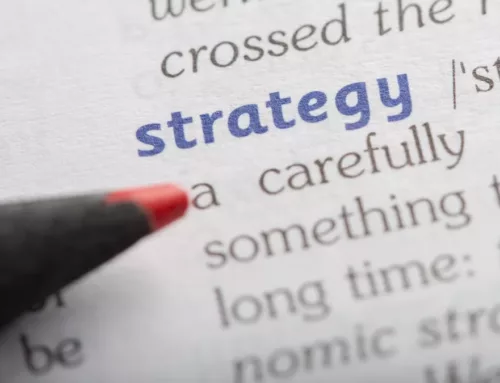Did you know 80 percent of companies believe they offer superior customer satisfaction, but only 8 percent of customers would rate the customer service they receive as superior?
Most companies aren’t providing the level of customer satisfaction their clients want. Even worse, most aren’t aware of it!
So, how do you know you’re offering the type of service your customers expect?
The first step is to determine what metrics matter and how you’re going to accurately track them. You don’t just come up with a customer satisfaction score.
Brush up on the types of customer satisfaction metrics and learn how your business can improve your customer service, build relationships, and decrease churn rate.
How To Define Customer Satisfaction
Before you can get into customer satisfaction metrics, you must define exactly what you mean by customer satisfaction. Without any context, the numbers lose their meaning.
So what are customer satisfaction metrics, and how do they differ from other data points your company may be measuring?
At its simplest, customer satisfaction metrics refer to how happy customers are with the service they receive. Since happiness is subjective, customer satisfaction is connected to the individual’s customer experience (CX).
So we can’t talk about customer satisfaction without examining the customer experience.
Customer experience is the sum of your customer’s experience with your brand across all touchpoint on the customer journey, from initial discovery through conversion.
CX reflects the way your company makes customers feel during interactions, as well as the way they feel when they use your products or explore your services.
While every customer’s journey is different, a representative customer journey might include:
- Interactions with your company’s chatbot
- Visits to your company’s website
- An exchange of tweets using your brand’s hashtag
- Calls to a customer service line
- Email support after purchasing a product
Today, customer experience is omnichannel.

Consider how in decades past, a customer might have come into your store or called our sales rep on the phone.
In those days, there were fewer touch points, so it was easier to monitor the customer experience.
Customer experience metrics can show you where your company is doing it right and where you are not providing the level of service your customers have come to expect. Since you can color metrics by channel, you can drill down with the data to identify valuable information.
It’s important that you get it right, because your customers have more choice than ever, and if they don’t like the experience you provide them, they’ll shop elsewhere.
Consider that by 2020 CX is poised to be the biggest differentiator between brands. Bigger than price point.
You’ve still got time to close the customer feedback loop, but you need to act soon.
Now that you understand the importance of customer experience metrics, what are you looking for?
Customer Satisfaction Versus Customer Loyalty
Measuring customer satisfaction helps determine the level of happiness a customer feels about your company, your products, or your service.
Customer loyalty reflects whether a customer would buy from you again and how they feel about that.
Say you offer a unique product your customer can’t get anywhere else, but you don’t provide great service: Your website is disorganized and your products take forever to ship.
Your customers will buy from you again, out of necessity, but they won’t feel good about it. The minute they can get that product from another supplier, they’ll abandon you.
Customer Satisfaction vs Customer Success
Customer success and customer satisfaction metrics may be linked, but there is a slight difference.
While customer satisfaction reflects the buyers’ feelings about their shopping experience, customer success reflects the company’s relationship with its customers.
Ask yourself if your company is vested in making customers as successful as possible.
Consider a software company: To increase customer success, the software company might host free webinars, link to training videos on YouTube, or provide personalized trainings to help new clients make the most of their investment.
Or maybe a B2B model, such as the JoinFantastic, where franchisees are both customers are also part of the business. The company offers full support along with extensive training and even a referral program for onboarding new members while actively monitoring progress and success so everybody in the ecosystem is up-to-date and happy.
When the clients can begin using the software right away to accomplish their objectives, it’s customer success. When the company offers limited support, the customer may have varying levels of success depending on their comfort with technology.
That’s why the team behind the online resume builder – EnhanCV carries multi-stage communication via email to verify how satisfied people are by the app but also with the end result of using the end-product. This way the company can measure both experience and satisfaction.
Customer Satisfaction vs Customer Experience (CX)
You know that there’s a correlation between CX and customer satisfaction, but what is the difference?
Well, one is an experience—something that happens to the customer—and the other is how they feel about the experience they had.
Looking at it this way, it’s easy to see that better satisfaction is likely due to an increase in CX. When your customers have more fun along their journey, they will feel better about the outcome.
Customer experience is a slightly vaguer term. It describes the extent to which a customer is satisfied with their interactions with your company.
Therefore, the customer experience you’re able to provide is a component of your customer support activities, customer success efforts, and how useful the customer perceives your good or service to be.
As a slightly more intangible sort of concept, you need to establish a way to measure your customer experience. Chasing a better customer experience without having a concrete way of describing what actual goals you’re trying to achieve is a surefire way to waste time and money.
Once you have a baseline reading, you can monitor changes on an ongoing basis to keep your finger on the pulse of what your customers are thinking.
If you do spot issues, the first place to look for answers is most likely your customer support department. What issues are customers raising? Customer success may also be able to provide some insights based on the interactions they’re having with clients.
Out of the different terms, the quality of your customer experience is probably the most important.
It’s the end result of nearly every business activity – from sales and marketing (is the product as described?) to operations/development (is the quality of the product consistent?) to support and service.
However, it’s also the most difficult to use properly.
Without an appropriate strategy to find kinks in your customer experience and resolve them successfully, it can be very difficult to improve your customers’ perception of your product and your brand.
Customer Satisfaction vs Customer Service
What about the relationship between customer service and customer satisfaction? If you provide excellent service, then your customers must be happy, right?
There is a correlation here. Good service affects satisfaction. Simple.
Consider that customers don’t often seek out a service until they encounter a problem and you’ll see where the gap is. If your customer experience is seamless, your customer won’t need to check the FAQ to find the information they need.
Chatbots, knowledge bases, and comprehensive FAQs are still important, but they are not a substitute for CX improvements.
Essentially, it just means being able to help customers solve problems they may be experiencing with your product, or answer questions about how your product functions.
Customer Satisfaction vs Customer Expectation
This is the personal part of the customer satisfaction process: Every customer comes to your website with their own expectations. How well these expectations are met affects you over customer satisfaction metrics.
Obviously, the lower your customer’s expectations going into conversion, the better they will feel when your product exceeds those expectations.
That doesn’t mean lowball customer expectations. After all, you take pride in your products or you wouldn’t be in business!
By managing expectations with accurate web copy, product descriptions, photos, and videos before purchase, you may increase satisfaction.
How Do the Concepts Interact?
Your customer support and customer success play an important role in influencing the quality of the customer experience you’re able to deliver.
Customers understand that things go wrong – this is especially true in B2B, where firms know how difficult it is to produce a perfect product.
Clients measure your business on the quality of the support you can provide, and the effort you take to help them be successful.
Essentially, the three form a pyramid.
Customer support and customer success are the base and should take up the most of your time to get right.
Customer experience is the most important outcome – it sits at the very top. However, it relies on the quality of the two CSs as a foundation.

To really go above and beyond, you can promote teamwork between your support and success teams, assuming that they’re separate.
As a starting point, as Tom Paton from ContactSpace puts it: figure out the recurring questions that customers ask.
Could you proactively address these concerns during initial training/onboarding sessions?
If you are able to prevent the customer from having to come to you for help, your product will be perceived as more intuitive to use, without you having to make a single change to your good or service.
It’s also best practice to promote the importance of your customer experience to these two teams. Attach any goals you want them to achieve to positive customer outcomes, whether directly or indirectly.
For example, Feedier found that churn rate was the most popular KPI for customer success.
However, it may be worth being more granular with your support department – for example by measuring first-contact resolution or the average number of replies per request.
What Types of Metrics Measure Customer Satisfaction?
Customer Satisfaction Score (CSAT)

What Is CSAT?
CSAT reflects how happy your customers are with your products, service, or brand.
How Do You Measure CSAT?
Customer Satisfaction Score (CSAT) is measured by asking clients to measure their satisfaction on a 1-5 scale, where 1 is very unsatisfied and 5 being very satisfied.
When Is CSAT Useful?
CSAT helps you understand how happy customers are with a discrete action or aspect of your products, such as the onboarding process for new clients.
To give an example, consider an average CSAT of 6 after customers were asked to rank their satisfaction with a recent interaction with your customer service reps via chat.
Such a low score would indicate that most customers are getting great service, but there is at least something your team isn’t getting right.
Net Promoter Score (NPS)

What Is Net Promoter Score?
Net Promoter Score reflects how likely customers are to recommend your company to others.
How Do You Measure Net Promoter Score?
Net Promoter Score is measured through a customer satisfaction survey that asks your customers how likely they are to recommend your company to others, usually on a scale of 0-10 where 0 is unlikely and 10 is highly likely.
When Is Net Promoter Score Useful?
Net Promoter Score helps you anticipate churn, measure loyalty, and measure satisfaction at touch points. You might survey customers when they call customer service or complete a certain action on your website, for instance.
For example, consider an average NPS of 8 thirty days after acquiring a customer. This would indicate that customers were highly satisfied (and likely to recommend to peers), but there’s also a little room to do better.
Customer Effort Score (CES)

What is CES?
CES reflects the effort a customer puts into interacting with your brand. High effort suggests low satisfaction due to poor CX.
How Do You Measure CES?
CES surveys measure the ease or difficulty of brand interactions, such as customer support or purchasing. These are usually on a numeric scale form 0-5 where 0 represents something that was difficult and 5 represents something that was easy.
When Is CES Useful?
CES highlights areas of poor CX, so you can focus on improvements.
To give an example, consider an average CES of 2 in response to a question about your onboarding process. This would indicate that customers found the onboarding process confusing. Or, it may suggest that this is a hurdle to customer retention.
Churn Rate
What Is Churn Rate?
Churn rate reflects how many customers you lose over time.
How Do You Measure Churn Rate?
NPS can measure churn rate, but so can a simple formula: # of customers at beginning of month – # of customers at end of month/ # customers at beginning of month.
When Is Churn Rate Useful?
Churn rate offers a check on these systems: If CX and satisfaction are high, churn should be low.
To give an example, consider your company has 1000 customers at the beginning of the month and 800 at the end of the month. The churn rate would be 1000-800/1000, or 20 percent.
Knowing every month your business is losing 20 percent of its existing customers, you can tell there is something wrong. Then you can take steps to improve customer satisfaction and cut those losses.
Benefits of Customer Satisfaction
I could write an entire blog post on the benefits of customer satisfaction, but for now, let’s pick out a few key points. When you increase customer satisfaction, you will:
- Increase customer loyalty
- Gain higher or more frequent purchases from existing customers
- Gain new customers through referrals and word of mouth
- Generate buzz for exponential growth
- Decrease spending on customer acquisition
- Increase profits
Best Practices in Measuring Customer Satisfaction
Choose The Right Metric
No one size fits all.
Now that you understand types of customer satisfaction metrics and ways to measure it, determine what data to collect, so you can gather data, then analyze it.
Specificity is important here. If you are going to become a feedback friendly company, then you need to avoid overly broad questions that don’t deliver meaningful data.
“Do you have any questions?” is a vague question that doesn’t always help users feel comfortable asking questions, especially when everyone else is quiet.
Instead, asking what works well and what is not working well opens the door to specific responses that your brand can act on.
Create a Customer Satisfaction Metrics Driven Survey
If you send a lengthy survey, odds are that you will only get responses when customers are unhappy with the service they received.
Short surveys deliver a higher survey response rate, so focus on what you most need to know and offer an incentive for completion. 55 percent of companies just ask for NPS, then measure customer satisfaction from that.
As the data comes in, you can look for patterns, which suggest that a number of users have the same experience, positive or negative, with an aspect of your company. When you know what your customers enjoy and what they dislike, you can take informed action.
Bonus: Recommended Customer Satisfaction Metrics Driven Tools
I’ve touched on the importance of customer relationships and satisfaction metrics and on choosing what to measure, but how is your company supposed to collect these measurements?
In terms of feedback software, where you can create and send surveys, I can’t pass up the opportunity to highlight our product, Feedier ?.
You’ll be able to track and gain insights from all KPIs mentioned above. Using Feedier is free and our team is always available to help.

To track customer experience and deliver analytics, so you can spot patterns and high-level trends, Amplitude is your go-to.
If you want to learn more about eCommerce Analytics you should definitely check this Definitive guide.

For email campaigns, which can deliver qualitative feedback in the customer experience process, look to Intercom or Lemlist.


In Conclusion
Collecting CX and customer satisfaction metrics will help your company understand where you are succeeding and where you are not meeting customer expectations.
However, all the data is meaningless if you don’t act on it by making improvements to promote a better customer experience.
Remember that it costs 7 times more to gain a new customer than to keep an existing one. Your bottom line benefits from customer loyalty.
Drawing on the data, ask yourself how your company can do it better?
There is no one size fits all answer, since every brand has a different CX. We’ve shared common strategies to increase customer loyalty that may be of interest to you.
If your company is not presenting accurate information to set user expectations, then increasing transparency can benefit satisfaction rate.
If your customer support team is overwhelmed with requests, then bringing on more people to lighten the load can create better interactions with every customer who needs support, leading to improved customer satisfaction rates.
It’s less important what specific action you take. Instead, what’s important is your commitment to becoming a feedback friendly company–to listening to what your customers have to say, then finding ways to adapt your model so you are always delighting them.






